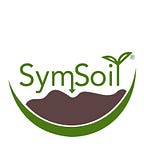Tree Equity — How Many Trees Does Your Community Need?
After learning about 100KTrees, the first question usually is: How many trees are enough trees? 100KTrees for Humanity is an initiative where people take climate action into their own hands by planting 1 additional tree per person in their community.
Is one additional tree per person enough? The answer is a combination of three things:
- The natural environment — Was your region Grassland? Forest? Desert?
- The population density — The right answer is different for downtown Dallas, the core of the 4th largest metropolitan area in the US, with 7.5 million people, and the city of Plano, 19 miles north of downtown Dallas, with a population of 285,000. And finally,
- The existing tree canopy. How many trees are already there?
The combination of these factors is known as Tree Equity, which is the estimated “right number” of trees, so that everyone can experience the benefits that trees provide. American Forests has a free calculator which answers this question, with information about 150,000 neighborhoods across the country.
The aggregate number for full Tree Equity in America, based on this calculator, and a study done by David Nowak of the US Forestry Service, is 31.4 million trees. At maturity, 43% of U.S. urban areas would be under the tree canopy, a significant increase from shade from trees in today’s cities. Most city managers forget that trees, like streets and sewers, are critical infrastructure to our urban quality of life. It is our job, as residents to encourage tree planting and, as constituents, to remind politicians of the importance of trees.
Thirty-one million trees per year is the number of trees that need to be planted in America to slow climate change. Planting 31.4 million trees would also create and support more than 200,000 new jobs and store nearly 1 billion metric tons of carbon.
Nationally, the annual savings would exceed $5 billion per year, just over $1.5B in public health savings and over $3.3B in energy savings. The energy savings are based on 2020 energy prices and the public health savings are from avoided asthma-related emergency room visits and stress reduction. Plus the value of clean drinking water and storm damage mitigation, which Theodore Endreny (Professor of Forestry in Syracuse) put at about $2.5 million per urban square mile.
What is your community’s tree equity? I found the calculator a bit hard to find and maneuver around, so before you click through, note that, when in doubt, click on the name of the city within the map, as this will open (or reopen) the calculator.
Click here www.treeequityscore.org and search by the name of a city or town. A map like the one above will open. You can zoom in or out, and move around to find your area.
To the left of the map, is numerical information about a neighborhood relative to the surrounding area. Scrolling down and clicking through various links will provide a wealth of additional information.
To answer the question, How many trees does my community need? Click on the Municipal Report, at the top of the box with the neighborhood Tree Equity Score. Above the map of the city, with scores for each neighborhood, is the aggregate Tree Equity Score for the community.
Plano, Texas, with a total city score of 87 out of 100 has great tree canopy coverage. Only 19 out of 181 neighborhoods have less than the recommended minimum tree equity score of 75, and it will only take 31,964 trees to bring every neighborhood up the minimum. Hooray!
But if a local group wanted to address climate change, and wanted to bring every neighborhood up to the recommended 100 score, they would drag the marker (red arrow) to the right to learn that 132 neighborhoods in Plano need more tall plants, specifically 220,299 more trees. They would also find that areas with the greatest needs tended to be the poorer neighborhoods.
Each neighborhood’s number reveals a longer legacy of underinvestment, leading to today’s public health impacts. A future of ever more extreme heat means Boston summers will feel like south Florida or Chicago to experience heat like in the Mojavi Desert with temperatures above 110 degrees. Such temperature increase will increase heat-related deaths, with casualties falling overwhelmingly on communities of color. American Forests found communities of color averaged 48% less cooling tree canopy.
100KTrees uses one additional tree per person as a useful approximation. In the case of Plano Texas, the city has a large number of trees to start with, so the actual number of trees needed (220,299) is only 77% of the population number (285,494 in the 2020 census.)
Why does SymSoil care? We focus on solutions to environmental issues, with a focus on soil biology. Trees and plants feed, and are fed by, the soil microbiome. Healthy soil influences water, carbon sequestration and human health. SymSoil holds a patent on the first scalable approach to manufacturing Soil Food Web products as an alternative to agrochemicals.
SymSoil is a supporter of 100KTrees4Humanity, an urban tree planting project focused on action that moves us towards solutions to climate change with equity and inclusion.
